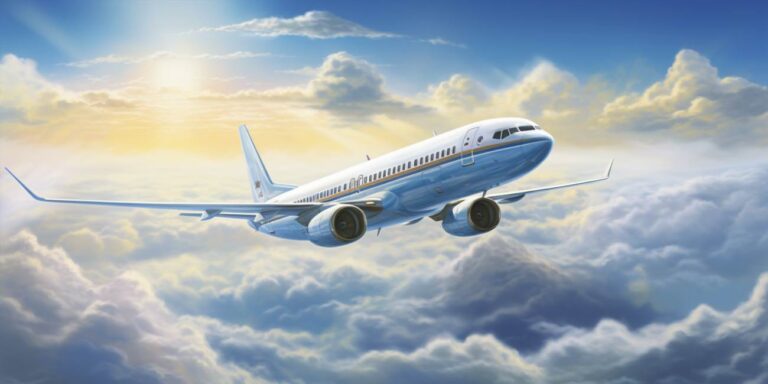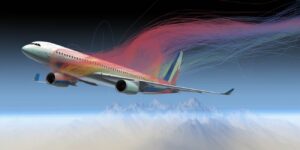The Boeing 737, often hailed as the workhorse of the aviation industry, has a remarkable history that dates back to its maiden flight in the 1960s. Over the decades, it has undergone numerous transformations, evolving into a symbol of reliability and efficiency. The Boeing 737 family encompasses a range of models, each catering to specific airline needs and passenger capacities.
One of the key factors contributing to the Boeing 737’s popularity is its versatility. Airlines across the globe, regardless of size or business model, have found this aircraft to be a strategic asset. With a seating capacity that can vary from around 85 to over 230 passengers, the 737 adapts seamlessly to the demands of both short-haul and medium-haul routes.
Efficiency takes center stage when discussing the Boeing 737. Airlines are continually seeking ways to optimize fuel consumption and reduce operating costs, and this aircraft ticks all the boxes. Its advanced aerodynamics, cutting-edge technology, and fuel-efficient engines make it a standout performer in the fiercely competitive aviation landscape.
Another feather in the 737’s cap is its global presence. You’d be hard-pressed to find a major airline that doesn’t include the Boeing 737 in its fleet. This ubiquity is a testament to the aircraft’s reputation for safety, reliability, and passenger comfort.
Let’s take a closer look at some key features that have propelled the Boeing 737 to the summit of commercial aviation:
| Model | Seating Capacity | Range |
|---|---|---|
| 737-700 | 126 passengers | 6,020 km |
| 737-800 | 162 passengers | 5,765 km |
| 737 MAX 8 | 178 passengers | 6,570 km |
These specifications highlight the aircraft’s adaptability to different operational requirements, offering airlines the flexibility they need in a dynamic market.
Boeing 737 max passenger airliner popularity and controversies
The Boeing 737 Max passenger airliner has been a subject of both popularity and controversies since its introduction. Launched as an upgraded version of the highly successful Boeing 737 series, the Max variant aimed to deliver improved fuel efficiency and performance.
One of the key selling points of the 737 Max was its enhanced fuel efficiency, attributed to the advanced CFM International LEAP-1B engines and aerodynamic improvements. Airlines were drawn to the promise of reduced operating costs, making it an attractive choice for many carriers worldwide.
However, the aircraft faced severe challenges and controversies following two fatal crashes within a short span. The crashes involving Lion Air Flight 610 in October 2018 and Ethiopian Airlines Flight 302 in March 2019 raised serious concerns about the safety of the Boeing 737 Max.
The primary focus of the investigations centered on the Maneuvering Characteristics Augmentation System (MCAS), a flight control feature designed to prevent stalls. It was found that faulty sensor readings triggered the MCAS, leading to uncontrolled nose-down movements in both accidents. The subsequent global grounding of the 737 Max fleet by aviation authorities further intensified the controversy.
Boeing faced severe repercussions, including financial losses, damage to its reputation, and legal challenges. The crisis prompted the company to implement significant changes to the MCAS system and enhance pilot training programs. The process of regaining regulatory approval and restoring trust in the aircraft became a crucial focus for Boeing.
The aftermath of the incidents also triggered a wave of scrutiny regarding the regulatory oversight and certification processes in the aviation industry. Questions were raised about the relationship between Boeing and regulatory authorities, leading to a reevaluation of the procedures governing aircraft approvals.
Despite the controversies, Boeing remained committed to addressing the issues with the 737 Max. The company implemented comprehensive changes, including software updates, additional pilot training, and enhanced safety measures. The gradual lifting of the global grounding allowed the 737 Max to resume commercial operations, marking a significant step in Boeing’s efforts to recover from the crisis.
As the Boeing 737 Max returns to the skies, airlines continue to assess its performance and reliability. The aircraft’s popularity, once tarnished by the controversies, faces the challenge of rebuilding trust among passengers, airlines, and the aviation industry as a whole.
Airbus a320 – the main competitor of famous boeing aircraft
The aviation industry has long been dominated by fierce competition between major players, and one of the most notable rivalries is between Airbus and the renowned Boeing aircraft. In this high-stakes game, the Airbus A320 stands out as a formidable competitor, challenging Boeing’s dominance in the market.
One of the key features that makes the Airbus A320 a strong competitor is its innovative design as a twin-engine aircraft. The twin-engine configuration not only enhances fuel efficiency but also provides a level of reliability that airlines value in their operations. This design choice aligns with the industry’s push towards more sustainable and economical air travel.
The Airbus A320 is specifically tailored for the short-to-medium range segment, making it an ideal choice for airlines operating in regional markets. This niche focus allows the aircraft to excel in routes where efficiency and quick turnarounds are paramount. The A320’s adaptability to diverse operational needs positions it as a versatile and sought-after option for airlines around the globe.
As the rivalry between Airbus and Boeing intensifies, the Airbus A320 has carved a niche for itself, offering a compelling alternative to Boeing’s offerings in the same category. Airlines often face the challenging task of selecting an aircraft that not only meets their operational requirements but also provides a competitive edge in the market. The Airbus A320 addresses these concerns with its balance of performance, efficiency, and passenger comfort.
Examining the dynamics of this rivalry, it becomes evident that both Airbus and Boeing continually strive to outdo each other in technological advancements and market share. Each new iteration of the Airbus A320 is a response to Boeing’s innovations, creating a cycle of competition that drives progress in the aviation industry.
In the market for short-to-medium range aircraft, the Airbus A320 competes head-to-head with Boeing’s offerings, creating a healthy competition that benefits airlines and passengers alike. The rivalry fosters innovation and pushes both manufacturers to push the boundaries of what is possible in commercial aviation.
Boeing 777 long range wide body airliner for long haul flights
The Boeing 777 stands as an epitome of aviation engineering, specifically designed for long-range journeys, making it an exemplary choice for long-haul and transoceanic flights. With its distinctive features, this wide-body airliner redefines the experience of traversing vast distances across the globe.
One of the standout features of the Boeing 777 is its remarkable long-range capability. The aircraft boasts an impressive range, allowing it to effortlessly cover extensive distances without the need for frequent refueling stops. This is a game-changer for airlines operating on transoceanic flights, providing a direct and efficient connection between distant continents.
The wide-body design of the Boeing 777 adds a touch of luxury and comfort to the journey. Passengers on board experience a spacious and open cabin, providing ample room to move around and relax during the long-haul flight. The expansive interiors contribute to a more comfortable and enjoyable travel experience, especially crucial for extended journeys.
For airlines focusing on long-haul routes, the Boeing 777 offers an optimal balance between fuel efficiency and capacity. The aircraft’s advanced aerodynamics and fuel-efficient engines ensure that it can cover vast distances without compromising on payload capacity. This makes it a preferred choice for airlines aiming to serve distant destinations with a sizable number of passengers.
In terms of technology, the Boeing 777 incorporates state-of-the-art avionics and navigation systems, enhancing its capabilities for long-range operations. Pilots benefit from advanced automation features that contribute to the overall safety and efficiency of the long-haul journey. These technological advancements further solidify the Boeing 777’s reputation as a reliable workhorse for transoceanic flights.
Let’s delve into a few specifications to highlight the aircraft’s prowess. The Boeing 777 is equipped with powerful engines that not only propel it over long distances but also contribute to its impressive climb performance. This is particularly crucial for long-haul flights where reaching cruising altitude efficiently is essential for overall fuel efficiency.
The aerodynamic efficiency of the Boeing 777 is evident in its fuel-efficient design. This not only reduces the environmental impact but also makes it an economically viable option for airlines operating on long-haul routes. The aircraft’s ability to cover vast distances with a reduced environmental footprint aligns with the global aviation industry’s push for sustainability.
See also:
- Which aircraft manufacturer is superior: airbus or boeing?
- Airbus versus boeing – which plane manufacturer is better?
- Airbus a380 kontra boeing 747 – który samolot pasażerski jest lepszy?
- Airbus beluga vs boeing dreamlifter – giants of air transport
- How much does it cost to buy an airbus a380 superjumbo jet






